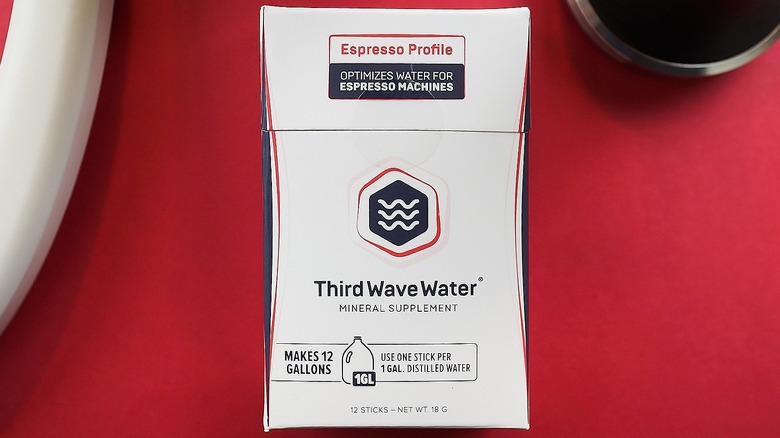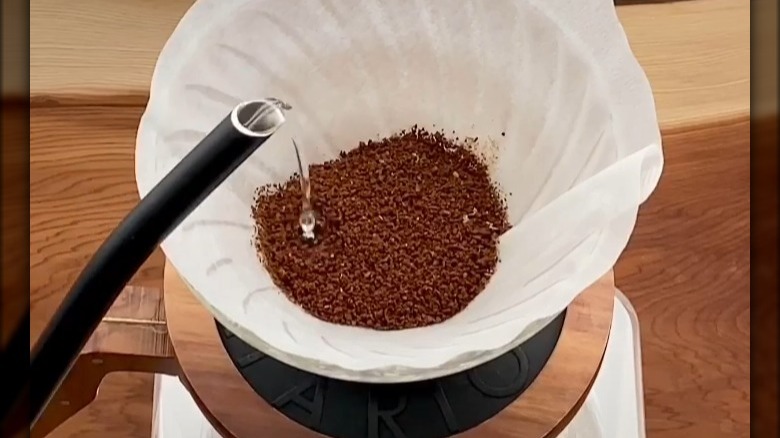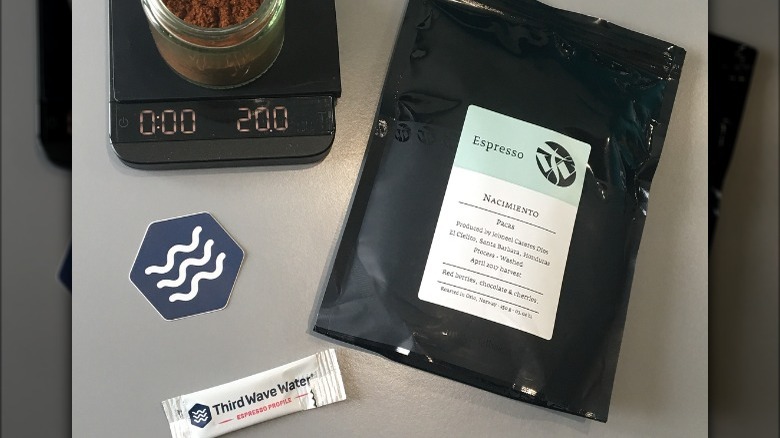What Happened To Third Wave Water After Shark Tank?
"Shark Tank" must be a highly daunting experience – not only do contestants have the pressure of standing before some of the biggest beasts in business begging for their money, but they also have to put on their best performance for people watching at home (which can be an average of more than 3.5 million, according to TVLine).
For Charles Nick and Taylor Minor, the visit to the inner sanctum of "Shark Tank" must have been particularly nerve-wracking. The business partners appeared in Episode 906 of the hit entrepreneurial show, notes Shark Tank Blog, and pitched the services of their company Third Wave Water. While many "Shark Tank" inventions can be inspirational and surprisingly useful, Third Wave Water seemed to be an especially bold ambition.
Nick and Minor argued that Third Wave Water could revolutionize the taste of coffee and espresso by using mineral supplements to boost the quality of the water used to make them, reports Ratio. Given that the National Coffee Association found that 66% of U.S. adults who responded to a survey drank coffee "within the past day," clearly, anything that enhances the coffee-drinking experience could have big financial benefits. But how exactly does Third Wave Water work, and did the Sharks believe in the idea?
Coffee can be affected by different types of water
Even water is complicated in the 21st century. Some water (including distilled) is soft, whereas other water can be mineral-intensive and hard. Soft water fails to draw out the flavors of coffee, but minerals in hard water (particularly magnesium) enhance taste and caffeine levels.
When featured on "Shark Tank," Third Wave Water presented two mineral packs: espresso and classic. The espresso pack is filled with magnesium, calcium, and potassium bicarbonate, while the classic mixture contains magnesium, calcium, and sodium (which also works well in tea). Despite featuring best-by dates, the minerals do not go bad and have the same lifespan as salt. To experience the minerals' benefits, one packet is mixed with one gallon of distilled water, shaken, and poured into a coffee maker.
The Sharks agreed that coffee boosted with mineral water tasted better than the option made with tap water, but concerns existed over the feasibility of the brand. Lori Greiner and Robert Herjavec believed mixing the minerals and water was too much hard work, and Kevin O'Leary and Mark Cuban thought the concept was too specific to be popular — despite projected sales of $160,000, notes Shark Tank Blog. The only backer was Barbara Corcoran, who agreed to invest $100,000 for 25% of the company and a $1 royalty on each unit sold. So, did the investment pay off?
Third Wave Water continues to thrive
The deal between Barbara Corcoran and Third Wave Water was not finalized, but Shark Tale Blog reports that the company has contact with her entrepreneur assistants, and its website includes an enthusiastic endorsement from Corcoran. Publicity of Third Wave Water on "Shark Tank" led to 10,000 sales in two weeks, according to Barista Magazine Online – producing more cash than Corcoran's proposed investment. The company's annual revenue has grown to $1 million, and it employs between 11 and 50 people. If those successes aren't enough, Cedarville, a village in Ohio where Minor owned a coffee shop, declared December 2 Third Wave Water Day.
Third Wave Water has gone on to market a wider range of products, including a dark roast coffee supplement made with magnesium sulfate, calcium citrate, and sodium bicarbonate (as well as a range of branded merchandise). It's even gone worldwide, with 347 locations selling Third Wave Water items in countries such as Sweden, Thailand, and New Zealand. Nick and Minor honed their brewing knowledge during a trip to Honduras, revealing an intention to enhance the company's performance as a result.
The company has created Tethys (after the Greek Titaness of fresh water), designed for coffee shops "to produce 250 gallons" of LED UV-treated water a day (mixed with Third Wave Water's mineral powders, details Dayton Business Journal). There is a waiting list for an upgraded version of the system, Tethys II, which does not have a release date.


